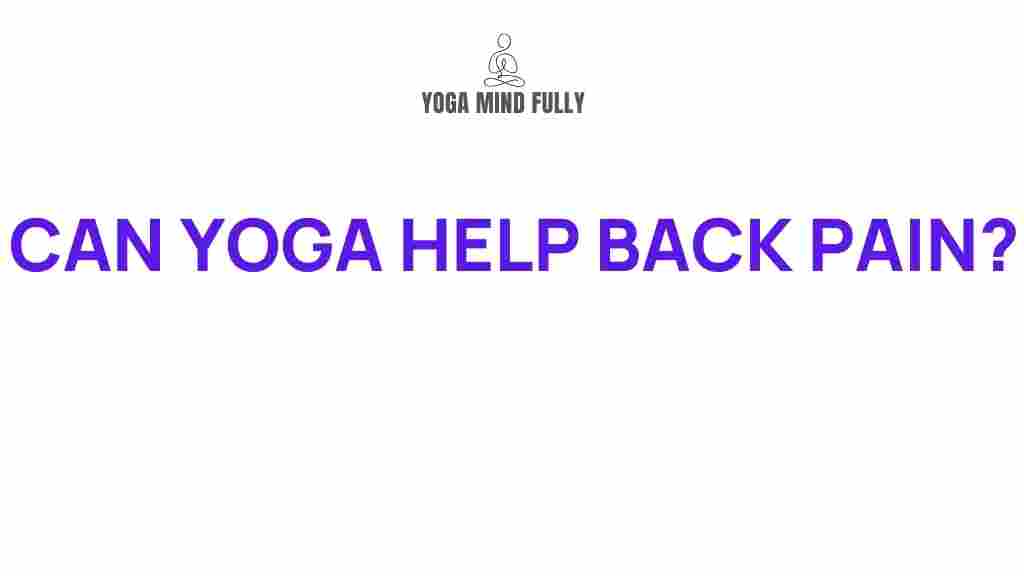How Yoga Can Alleviate Back Pain
Back pain is a common issue that affects millions of people worldwide. While there are numerous treatments available, one of the most effective and holistic methods is yoga. Known for its ability to improve flexibility, strength, and mental clarity, yoga has become a go-to solution for alleviating back pain. In this article, we’ll explore how yoga can help, provide step-by-step guidance on poses, and share tips for incorporating it into your daily routine.
Why Back Pain Happens
Back pain can stem from a variety of causes, including poor posture, lack of exercise, injury, or stress. Many of these issues can lead to stiffness, muscle imbalances, and even chronic discomfort. Thankfully, yoga offers a multifaceted approach that targets both the physical and mental aspects of back pain.
The Science Behind Yoga and Back Pain Relief
Yoga combines movement, stretching, and mindfulness, which work together to reduce tension and promote healing. Studies have shown that regular yoga practice can:
- Improve flexibility and mobility in the spine.
- Strengthen core and back muscles, providing better support for your posture.
- Reduce inflammation and increase blood circulation.
- Lower stress levels, which are often linked to muscle tension.
Step-by-Step Guide: Yoga Poses for Back Pain Relief
To get started, focus on poses specifically designed to relieve back pain. Here’s a step-by-step guide:
1. Cat-Cow Pose (Marjaryasana-Bitilasana)
This dynamic pose helps warm up the spine and improve mobility.
- Begin on your hands and knees in a tabletop position.
- Inhale and arch your back, lifting your head and tailbone (Cow Pose).
- Exhale and round your spine, tucking your chin and pelvis (Cat Pose).
- Repeat for 5-10 breaths, moving slowly and mindfully.
2. Child’s Pose (Balasana)
A restorative pose that stretches the lower back and hips.
- Kneel on the floor and sit back onto your heels.
- Extend your arms forward and rest your forehead on the mat.
- Breathe deeply, staying in this pose for 1-3 minutes.
3. Downward Dog (Adho Mukha Svanasana)
This pose lengthens the spine and strengthens the supporting muscles.
- Start in a plank position and lift your hips toward the ceiling.
- Press your hands and feet into the mat, keeping your spine elongated.
- Hold for 5-7 breaths, ensuring your shoulders and neck stay relaxed.
4. Bridge Pose (Setu Bandhasana)
Strengthens the lower back and core while improving spinal flexibility.
- Lie on your back with your knees bent and feet flat on the floor.
- Press into your feet and lift your hips toward the ceiling.
- Hold for 5 breaths before lowering slowly.
5. Sphinx Pose
This gentle backbend promotes flexibility and relaxation in the lower back.
- Lie on your stomach with your elbows under your shoulders.
- Press into your forearms and lift your chest slightly.
- Hold for 1-2 minutes, breathing deeply.
Common Mistakes to Avoid
While yoga is generally safe, practicing incorrectly can exacerbate back pain. Here are some common mistakes to avoid:
- Overstretching: Stretch to your comfort level without forcing your body.
- Ignoring alignment: Proper posture is crucial to prevent strain.
- Skipping warm-ups: Always prepare your body with gentle movements before diving into deeper stretches.
Tips for Incorporating Yoga into Your Routine
Consistency is key when using yoga to alleviate back pain. Here are some tips to make it a sustainable part of your lifestyle:
- Start with short, 10-15 minute sessions and gradually increase your practice time.
- Incorporate yoga into your morning or evening routine to set a positive tone for your day or relax before bed.
- Join a yoga class or follow online tutorials for guided practice. Check out our beginner’s guide to yoga for more resources.
- Invest in a quality yoga mat for comfort and support during your practice.
When to Seek Professional Advice
While yoga is beneficial for most people, it’s essential to consult a healthcare professional if you:
- Have severe or persistent back pain.
- Experience numbness, tingling, or weakness in your limbs.
- Have a pre-existing condition that may affect your spine or mobility.
Conclusion
Incorporating yoga into your daily routine can be a game-changer for back pain relief. With regular practice, you’ll not only experience reduced pain but also improved posture, flexibility, and mental well-being. Start small, stay consistent, and always listen to your body. For more tips and resources, explore this comprehensive guide to yoga for back pain. Your journey to a healthier back starts today!
This article is in the category Yoga Practices and created by YogaMindFully Team
